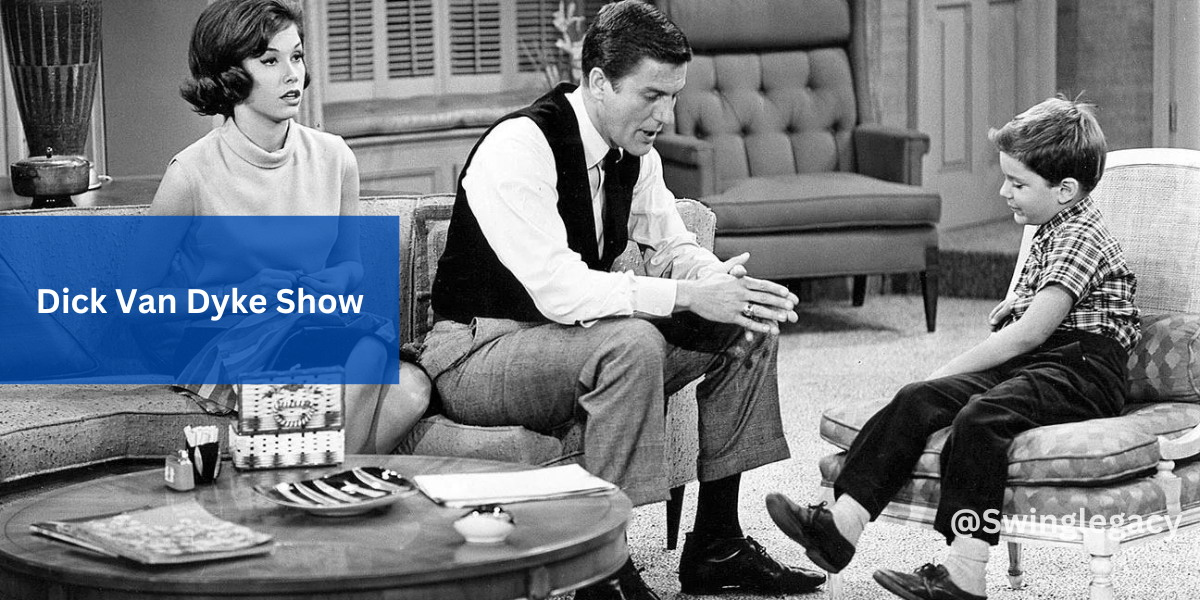“The Dick Van Dyke Show,” one of the cornerstones of American comedy television, stands as an emblem of innovation and lasting appeal. Running for four years between 1961-1966 on CBS, this iconic sitcom not only entertained its audiences but set new standards in sitcom genre. We explore here what made “Dick Van Dyke Show” classic as well as its lasting effect.
What Set “The Dick Van Dyke Show Apart?
“The Dick Van Dyke Show” focused on Rob Petrie, brought to life through Dick Van Dyke’s charismatic performance. His professional and personal lives intersected around working as a comedy writer on Alan Brady Show fictional reality TV program alongside co-writers Buddy Sorrell and Sally Rogers; their interrelations provided for rich source of comedy as well as character interactions that went far beyond traditional sitcom fare.
“The Dick Van Dyke Show” revolutionized television by using more sophisticated, character-driven humor while engaging with contemporary social issues such as sexual harassment. Topics like marriage and workplace dynamics were addressed honestly on screen – making “Dick Van Dyke Show” one of the first comedies ever to reflect real life issues within its comedic framework.
How Does the Show Represent Its Period?
The 1960s marked an era of immense cultural and societal transformation, which “The Dick Van Dyke Show” helped reflect in various ways. By situating part of its program within a TV variety show writers’ room, viewers gained an inside look into an industry going through profound transformation itself during that period – an industry itself experiencing change at that point in history. Furthermore, frequent references to cultural issues helped keep its relevance at its original run, further contributing to its timeless allure today.
Rob Petrie’s family life with Laura (played by Mary Tyler Moore) and son Ritchie reflected an evolving American family dynamic. Laura as an intelligent, stylish, and sometimes independent woman set the bar high compared to traditional housewives seen on television at that time, foreshadowing later women’s liberation movements such as #MeToo that would gain steam throughout this decade.
What was the Impression of Its Cast and Characters?
Dick Van Dyke made Rob Petrie an endearing television character, yet its real draw was its ensemble cast. Morey Amsterdam’s Buddy Sorrell provided lively banter while Rose Marie’s Sally Rogers brought depth as an ambitious career woman navigating dating world – together they created an irresistibly charming workplace environment viewers loved watching unfold onscreen.
Mary Tyler Moore’s portrayal of Laura Petrie on television was powerfully impactful. Combining warmth, intelligence and fashion into an unforgettable character helped redefine women’s roles on screen. At the conclusion of her series starring role on “The Mary Tyler Moore Show”, Moore continued pushing boundaries for female characters on screen further still.
Why has the show remained popular?
“The Dick Van Dyke Show” continues to resonate decades after it first premiered during the 1960s. This is due to its high-quality writing, timeless humor, universal themes, innovative sitcom structure with dramatic moments included and meta humor — which have all proven highly influential on subsequent comedies.
Its carefully planned conclusion also set an important precedent on television, showing that sitcoms could end on their own terms with satisfying conclusions, inspiring subsequent shows to follow suit and adopt similar methods of endings.
“The Dick Van Dyke Show” was more than just comedy: it was an iconic cultural touchstone, providing audiences with laughter, relatable characters, thoughtful social commentary and creative provocation in one package. With genuine comedy mixed with real life situations crafted into its script by Rob Petrie’s delightful comedy troupe (Rob Petrie in particular!), audiences will continue being delighted for decades afterward by this cultural touchstone’s ongoing popularity both syndicated and digital formats alike.

